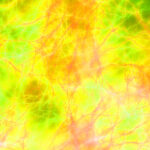Prolactin Agonists
- Growth hormone
- Human placental lactogen
- Placental growth hormone (growth hormone variant)
- Prolactin
- S179D-hPRL
- Somatotropin
An agonist is a chemical that activates a receptor to produce a biological response. Receptors are cellular proteins whose activation causes the cell to modify what it is currently doing. In contrast, an antagonist blocks the action of the agonist, while an inverse agonist causes an action opposite to that of the agonist. Etymology: From the Greek αγωνιστής (agōnistēs), contestant; champion; rival < αγων (agōn), contest, combat; exertion, struggle < αγω (agō), I lead, lead towards, conduct; drive
Types of agonists
Receptors can be activated by either endogenous agonists (such as hormones and neurotransmitters) or exogenous agonists (such as drugs), resulting in a biological response. A physiological agonist is a substance that creates the same bodily responses but does not bind to the same receptor.
An endogenous agonist for a particular receptor is a compound naturally produced by the body that binds to and activates that receptor. For example, the endogenous agonist for serotonin receptors is serotonin, and the endogenous agonist for dopamine receptors is dopamine.
- Goodman and Gilman’s Manual of Pharmacology and Therapeutics. (11th edition, 2008). p14. ISBN 0-07-144343-6
Full agonists bind to and activate a receptor with the maximum response that an agonist can elicit at the receptor. One example of a drug that can act as a full agonist is isoproterenol, which mimics the action of adrenaline at β adrenoreceptors. Another example is morphine, which mimics the actions of endorphins at μ-opioid receptors throughout the central nervous system. However, a drug can act as a full agonist in some tissues and as a partial agonist in other tissues, depending upon the relative numbers of receptors and differences in receptor coupling.[medical citation needed]
A co-agonist works with other co-agonists to produce the desired effect together. NMDA receptor activation requires the binding of both glutamate, glycine and D-serine co-agonists. Calcium can also act as a co-agonist at the IP3 receptor.
A selective agonist is selective for a specific type of receptor. E.g. buspirone is a selective agonist for serotonin 5-HT1A.
Partial agonists (such as buspirone, aripiprazole, buprenorphine, or norclozapine) also bind and activate a given receptor, but have only partial efficacy at the receptor relative to a full agonist, even at maximal receptor occupancy. Agents like buprenorphine are used to treat opiate dependence for this reason, as they produce milder effects on the opioid receptor with lower dependence and abuse potential.
An inverse agonist is an agent that binds to the same receptor binding-site as an agonist for that receptor and inhibits the constitutive activity of the receptor. Inverse agonists exert the opposite pharmacological effect of a receptor agonist, not merely an absence of the agonist effect as seen with an antagonist. An example is the cannabinoid inverse agonist rimonabant.
A superagonist is a term used by some to identify a compound that is capable of producing a greater response than the endogenous agonist for the target receptor. It might be argued that the endogenous agonist is simply a partial agonist in that tissue.
An irreversible agonist is a type of agonist that binds permanently to a receptor through the formation of covalent bonds. A few of these have been described, including Paracetamol[citation needed]
- De Mey JGR, Compeer MG, Meens MJ (2009). “Endothelin-1, an Endogenous Irreversible Agonist in Search of an Allosteric Inhibitor”. Mol Cell Pharmacol. 1 (5): 246–257.
- Rosenbaum DM, Zhang C, Lyons JA, Holl R, Aragao D, Arlow DH, et al. (January 2011). “Structure and function of an irreversible agonist-β(2) adrenoceptor complex”. Nature. 469 (7329): 236–240. Bibcode:2011Natur.469..236R. doi:10.1038/nature09665. PMC 3074335. PMID 21228876
A biased agonist is an agent that binds to a receptor without affecting the same signal transduction pathway. Oliceridine is a µ-opioid receptor agonist that has been described to be functionally selective towards G protein and away from β-arrestin2 pathways.
- DeWire SM, Yamashita DS, Rominger DH, Liu G, Cowan CL, Graczyk TM, et al. (March 2013). “A G protein-biased ligand at the μ-opioid receptor is potently analgesic with reduced gastrointestinal and respiratory dysfunction compared with morphine”. The Journal of Pharmacology and Experimental Therapeutics. 344 (3): 708–717. doi:10.1124/jpet.112.201616. PMID 23300227. S2CID 8785003
New findings that broaden the conventional definition of pharmacology demonstrate that ligands can concurrently behave as agonist and antagonists at the same receptor, depending on effector pathways or tissue type. Terms that describe this phenomenon are “functional selectivity“, “protean agonism”,
- Kenakin T (March 2001). “Inverse, protean, and ligand-selective agonism: matters of receptor conformation”. FASEB Journal. 15 (3): 598–611. CiteSeerX 10.1.1.334.8525. doi:10.1096/fj.00-0438rev. PMID 11259378. S2CID 18260817
- Urban JD, Clarke WP, von Zastrow M, Nichols DE, Kobilka B, Weinstein H, et al. (January 2007). “Functional selectivity and classical concepts of quantitative pharmacology”. The Journal of Pharmacology and Experimental Therapeutics. 320 (1): 1–13. doi:10.1124/jpet.106.104463. PMID 16803859. S2CID 447937.
- De Min A, Matera C, Bock A, Holze J, Kloeckner J, Muth M, et al. (April 2017). “A New Molecular Mechanism To Engineer Protean Agonism at a G Protein-Coupled Receptor”. Molecular Pharmacology. 91 (4): 348–356. doi:10.1124/mol.116.107276. PMID 28167741.
or selective receptor modulators.
- Smith CL, O’Malley BW (February 2004). “Coregulator function: a key to understanding tissue specificity of selective receptor modulators”. Endocrine Reviews. 25 (1): 45–71. doi:10.1210/er.2003-0023. PMID 14769827.
Prolactin Antagonists
A receptor antagonist is a type of receptorligand or drug that blocks or dampens a biological response by binding to and blocking a receptor rather than activating it like an agonist. Antagonist drugs interfere in the natural operation of receptor proteins.
- “Pharmacology Guide: In vitro pharmacology: concentration-response curves.” GlaxoWellcome. Retrieved on December 6, 2007.
They are sometimes called blockers; examples include alpha blockers, beta blockers, and calcium channel blockers. In pharmacology, antagonists have affinity but no efficacy for their cognate receptors, and binding will disrupt the interaction and inhibit the function of an agonist or inverse agonist at receptors. Antagonists mediate their effects by binding to the active site or to the allosteric site on a receptor, or they may interact at unique binding sites not normally involved in the biological regulation of the receptor’s activity. Antagonist activity may be reversible or irreversible depending on the longevity of the antagonist–receptor complex, which, in turn, depends on the nature of antagonist–receptor binding. The majority of drug antagonists achieve their potency by competing with endogenous ligands or substrates at structurally defined binding sites on receptors.
- Hopkins AL, Groom CR (September 2002). “The druggable genome”. Nature Reviews. Drug Discovery. 1 (9): 727–30. doi:10.1038/nrd892. PMID 12209152. S2CID 13166282.
Types
See also: Enzyme inhibitor § Types of reversible inhibitors
Competitive
Competitive antagonists bind to receptors at the same binding site (active site) as the endogenous ligand or agonist, but without activating the receptor. Agonists and antagonists “compete” for the same binding site on the receptor. Once bound, an antagonist will block agonist binding. Sufficient concentrations of an antagonist will displace the agonist from the binding sites, resulting in a lower frequency of receptor activation. The level of activity of the receptor will be determined by the relative affinity of each molecule for the site and their relative concentrations. High concentrations of a competitive agonist will increase the proportion of receptors that the agonist occupies, higher concentrations of the antagonist will be required to obtain the same degree of binding site occupancy.
- Swinney DC (September 2004). “Biochemical mechanisms of drug action: what does it take for success?”. Nature Reviews. Drug Discovery. 3 (9): 801–8. doi:10.1038/nrd1500. PMID 15340390. S2CID 28668800.
In functional assays using competitive antagonists, a parallel rightward shift of agonist dose–response curves with no alteration of the maximal response is observed.
- Vauquelin G, Van Liefde I, Birzbier BB, Vanderheyden PM (August 2002). “New insights in insurmountable antagonism”. Fundamental & Clinical Pharmacology. 16 (4): 263–72. doi:10.1046/j.1472-8206.2002.00095.x. PMID 12570014. S2CID 6145796.
Competitive antagonists are used to prevent the activity of drugs, and to reverse the effects of drugs that have already been consumed. Naloxone (also known as Narcan) is used to reverse opioid overdose caused by drugs such as heroin or morphine. Similarly, Ro15-4513 is an antidote to alcohol and flumazenil is an antidote to benzodiazepines.
Competitive antagonists are sub-classified as reversible (surmountable) or irreversible (insurmountable) competitive antagonists, depending on how they interact with their receptor protein targets.
- Neubig RR, Spedding M, Kenakin T, Christopoulos A (December 2003). “International Union of Pharmacology Committee on Receptor Nomenclature and Drug Classification. XXXVIII. Update on terms and symbols in quantitative pharmacology” (PDF). Pharmacological Reviews. 55 (4): 597–606. doi:10.1124/pr.55.4.4. PMID14657418. S2CID1729572
Reversible antagonists, which bind via noncovalent intermolecular forces, will eventually dissociate from the receptor, freeing the receptor to be bound again.
- Stevens, E. (2013) Medicinal Chemistry: The Modern Drug Discovery Process. pg. 79, 84
Irreversible antagonists bind via covalent intermolecular forces. Because there is not enough free energy to break covalent bonds in the local environment, the bond is essentially “permanent”, meaning the receptor-antagonist complex will never dissociate. The receptor will thereby remain permanently antagonized until it is ubiquitinated and thus destroyed.
Non-competitive
A non-competitive antagonist is a type of insurmountable antagonist that may act in one of two ways: by binding to an allosteric site of the receptor,
- eds, David E. Golan, ed.-in-chief ; Armen H. Tashjian, Jr., deputy ed. ; Ehrin J. Armstrong, April W. Armstrong, associate (2008). Principles of pharmacology : the pathophysiologic basis of drug therapy (2nd ed.). Philadelphia, Pa., [etc.]: Lippincott Williams & Wilkins. p. 25. ISBN 978-0-7817-8355-2. Retrieved 2012-02-05.
- Neubig RR, Spedding M, Kenakin T, Christopoulos A (December 2003). “International Union of Pharmacology Committee on Receptor Nomenclature and Drug Classification. XXXVIII. Update on terms and symbols in quantitative pharmacology” (PDF). Pharmacological Reviews. 55 (4): 597–606. doi:10.1124/pr.55.4.4. PMID 14657418. S2CID 1729572.
or by irreversibly binding to the active site of the receptor. The former meaning has been standardised by the IUPHAR, and is equivalent to the antagonist being called an allosteric antagonist.
- Neubig RR, Spedding M, Kenakin T, Christopoulos A (December 2003). “International Union of Pharmacology Committee on Receptor Nomenclature and Drug Classification. XXXVIII. Update on terms and symbols in quantitative pharmacology” (PDF). Pharmacological Reviews. 55 (4): 597–606. doi:10.1124/pr.55.4.4. PMID 14657418. S2CID 1729572.
While the mechanism of antagonism is different in both of these phenomena, they are both called “non-competitive” because the end-results of each are functionally very similar. Unlike competitive antagonists, which affect the amount of agonist necessary to achieve a maximal response but do not affect the magnitude of that maximal response, non-competitive antagonists reduce the magnitude of the maximum response that can be attained by any amount of agonist. This property earns them the name “non-competitive” because their effects cannot be negated, no matter how much agonist is present. In functional assays of non-competitive antagonists, depression of the maximal response of agonist dose-response curves, and in some cases, rightward shifts, is produced.
- Vauquelin G, Van Liefde I, Birzbier BB, Vanderheyden PM (August 2002). “New insights in insurmountable antagonism”. Fundamental & Clinical Pharmacology. 16 (4): 263–72. doi:10.1046/j.1472-8206.2002.00095.x. PMID 12570014. S2CID 6145796.
The rightward shift will occur as a result of a receptor reserve (also known as spare receptors)
- Stephenson RP (February 1997). “A modification of receptor theory. 1956”. British Journal of Pharmacology. 120 (4 Suppl): 106–20, discussion 103–5. doi:10.1111/j.1476-5381.1997.tb06784.x. PMC3224279. PMID9142399. of the original article.
and inhibition of the agonist response will only occur when this reserve is depleted.
An antagonist that binds to the active site of a receptor is said to be “non-competitive” if the bond between the active site and the antagonist is irreversible or nearly so.
- eds, David E. Golan, ed.-in-chief ; Armen H. Tashjian, Jr., deputy ed. ; Ehrin J. Armstrong, April W. Armstrong, associate (2008). Principles of pharmacology : the pathophysiologic basis of drug therapy (2nd ed.). Philadelphia, Pa., [etc.]: Lippincott Williams & Wilkins. p. 25. ISBN 978-0-7817-8355-2. Retrieved 2012-02-05.
This usage of the term “non-competitive” may not be ideal, however, since the term “irreversible competitive antagonism” may also be used to describe the same phenomenon without the potential for confusion with the second meaning of “non-competitive antagonism” discussed below.
The second form of “non-competitive antagonists” act at an allosteric site.
- eds, David E. Golan, ed.-in-chief ; Armen H. Tashjian, Jr., deputy ed. ; Ehrin J. Armstrong, April W. Armstrong, associate (2008). Principles of pharmacology : the pathophysiologic basis of drug therapy (2nd ed.). Philadelphia, Pa., [etc.]: Lippincott Williams & Wilkins. p. 25. ISBN 978-0-7817-8355-2. Retrieved 2012-02-05.
These antagonists bind to a distinctly separate binding site from the agonist, exerting their action to that receptor via the other binding site. They do not compete with agonists for binding at the active site. The bound antagonists may prevent conformational changes in the receptor required for receptor activation after the agonist binds.
- D.E. Golan, A.H Tashjian Jr, E.J. Armstrong, A.W. Armstrong. (2007) Principles of Pharmacology: The Pathophysiologic Basis of Drug Therapy Lippincott Williams & Wilkins ISBN 0-7817-8355-0
Cyclothiazide has been shown to act as a reversible non-competitive antagonist of mGluR1 receptor.
- Surin A, Pshenichkin S, Grajkowska E, Surina E, Wroblewski JT (March 2007). “Cyclothiazide selectively inhibits mGluR1 receptors interacting with a common allosteric site for non-competitive antagonists”. Neuropharmacology. 52 (3): 744–54. doi:10.1016/j.neuropharm.2006.09.018. PMC 1876747. PMID 17095021
Uncompetitive
Uncompetitive antagonists differ from non-competitive antagonists in that they require receptor activation by an agonist before they can bind to a separate allosteric binding site. This type of antagonism produces a kinetic profile in which “the same amount of antagonist blocks higher concentrations of agonist better than lower concentrations of agonist”.
- Lipton SA (January 2004). “Failures and successes of NMDA receptor antagonists: molecular basis for the use of open-channel blockers like memantine in the treatment of acute and chronic neurologic insults”. NeuroRx. 1 (1): 101–10. doi:10.1602/neurorx.1.1.101. PMC 534915. PMID 15717010
Memantine, used in the treatment of Alzheimer’s disease, is an uncompetitive antagonist of the NMDA receptor.
- Parsons CG, Stöffler A, Danysz W (November 2007). “Memantine: a NMDA receptor antagonist that improves memory by restoration of homeostasis in the glutamatergic system—too little activation is bad, too much is even worse”. Neuropharmacology. 53 (6): 699–723. doi:10.1016/j.neuropharm.2007.07.013. PMID 17904591. S2CID 6599658.
Silent antagonists
Silent antagonists are competitive receptor antagonists that have zero intrinsic activity for activating a receptor. They are true antagonists, so to speak. The term was created to distinguish fully inactive antagonists from weak partial agonists or inverse agonists.[citation needed]
Partial agonists
Partial agonists are defined as drugs that, at a given receptor, might differ in the amplitude of the functional response that they elicit after maximal receptor occupancy. Although they are agonists, partial agonists can act as a competitive antagonist in the presence of a full agonist, as it competes with the full agonist for receptor occupancy, thereby producing a net decrease in the receptor activation as compared to that observed with the full agonist alone.
- Principles and Practice of Pharmacology for Anaesthetists By Norton Elwy Williams, Thomas Norman Calvey Published 2001 Blackwell Publishing ISBN 0-632-05605-3
- Patil PN (2002). “Everhardus J. Ariëns (1918–2002): a tribute”. Trends Pharmacol. Sci. 23 (7): 344–5. doi:10.1016/S0165-6147(02)02068-0.
Clinically, their usefulness is derived from their ability to enhance deficient systems while simultaneously blocking excessive activity. Exposing a receptor to a high level of a partial agonist will ensure that it has a constant, weak level of activity, whether its normal agonist is present at high or low levels. In addition, it has been suggested that partial agonism prevents the adaptive regulatory mechanisms that frequently develop after repeated exposure to potent full agonists or antagonists.
- Bosier B, Hermans E (August 2007). “Versatility of GPCR recognition by drugs: from biological implications to therapeutic relevance”. Trends in Pharmacological Sciences. 28 (8): 438–46. doi:10.1016/j.tips.2007.06.001. PMID 17629964.
- Pulvirenti L, Koob GF (April 2002). “Being partial to psychostimulant addiction therapy”. Trends in Pharmacological Sciences. 23 (4): 151–3. doi:10.1016/S0165-6147(00)01991-X. PMID 11931978.
E.g. Buprenorphine, a partial agonist of the μ-opioid receptor, binds with weak morphine-like activity and is used clinically as an analgesic in pain management and as an alternative to methadone in the treatment of opioid dependence.
- Vadivelu N, Hines RL (2007). “Buprenorphine: a unique opioid with broad clinical applications”. Journal of Opioid Management. 3 (1): 49–58. doi:10.5055/jom.2007.0038. PMID 17367094.
Inverse agonists
An inverse agonist can have effects similar to those of an antagonist, but causes a distinct set of downstream biological responses. Constitutively active receptors that exhibit intrinsic or basal activity can have inverse agonists, which not only block the effects of binding agonists like a classical antagonist but also inhibit the basal activity of the receptor. Many drugs previously classified as antagonists are now beginning to be reclassified as inverse agonists because of the discovery of constitutive active receptors.
- Greasley PJ, Clapham JC (December 2006). “Inverse agonism or neutral antagonism at G-protein coupled receptors: a medicinal chemistry challenge worth pursuing?”. European Journal of Pharmacology. 553 (1–3): 1–9. doi:10.1016/j.ejphar.2006.09.032. PMID 17081515.
- Kenakin T (January 2004). “Efficacy as a vector: the relative prevalence and paucity of inverse agonism”. Molecular Pharmacology. 65 (1): 2–11. doi:10.1124/mol.65.1.2. PMID 14722230.
Antihistamines, originally classified as antagonists of histamineH1 receptors have been reclassified as inverse agonists.
- Leurs R, Church MK, Taglialatela M (April 2002). “H1-antihistamines: inverse agonism, anti-inflammatory actions and cardiac effects”. Clinical and Experimental Allergy. 32 (4): 489–98. doi:10.1046/j.0954-7894.2002.01314.x. PMID 11972592. S2CID 11849647.
Reversibility
Many antagonists are reversible antagonists that, like most agonists, will bind and unbind a receptor at rates determined by receptor-ligand kinetics.
Irreversible antagonists covalently bind to the receptor target and, in general, cannot be removed; inactivating the receptor for the duration of the antagonist effects is determined by the rate of receptor turnover, the rate of synthesis of new receptors. Phenoxybenzamine is an example of an irreversible alpha blocker—it permanently binds to αadrenergic receptors, preventing adrenaline and noradrenaline from binding.
- Frang H, Cockcroft V, Karskela T, Scheinin M, Marjamäki A (August 2001). “Phenoxybenzamine binding reveals the helical orientation of the third transmembrane domain of adrenergic receptors”. The Journal of Biological Chemistry. 276 (33): 31279–84. doi:10.1074/jbc.M104167200. PMID 11395517.
Inactivation of receptors normally results in a depression of the maximal response of agonist dose-response curves and a right shift in the curve occurs where there is a receptor reserve similar to non-competitive antagonists. A washout step in the assay will usually distinguish between non-competitive and irreversible antagonist drugs, as effects of non-competitive antagonists are reversible and activity of agonist will be restored.
- Vauquelin G, Van Liefde I, Birzbier BB, Vanderheyden PM (August 2002). “New insights in insurmountable antagonism”. Fundamental & Clinical Pharmacology. 16 (4): 263–72. doi:10.1046/j.1472-8206.2002.00095.x. PMID 12570014. S2CID 6145796
Irreversible competitive antagonists also involve competition between the agonist and antagonist of the receptor, but the rate of covalent bonding differs and depends on affinity and reactivity of the antagonist. For some antagonists, there may be a distinct period during which they behave competitively (regardless of basal efficacy), and freely associate to and dissociate from the receptor, determined by receptor-ligand kinetics. But, once irreversible bonding has taken place, the receptor is deactivated and degraded. As for non-competitive antagonists and irreversible antagonists in functional assays with irreversible competitive antagonist drugs, there may be a shift in the log concentration–effect curve to the right, but, in general, both a decrease in slope and a reduced maximum are obtained.
- Lees P, Cunningham FM, Elliott J (December 2004). “Principles of pharmacodynamics and their applications in veterinary pharmacology”. Journal of Veterinary Pharmacology and Therapeutics. 27 (6): 397–414. doi:10.1111/j.1365-2885.2004.00620.x. PMID 15601436.
See also
Regarding Prolactin
- Δ1–9-G129R-hPRL
- Vincent Rouet, Roman L. Bogorad, Christine Kayser, Local prolactin is a target to prevent expansion of basal/stem cells in prostate tumors. August 9, 2010 107 (34) 15199-15204 https://doi.org/10.1073/pnas.0911651107
- Using a double-transgenic approach, we show that Δ1–9-G129R-hPRL, a competitive PRL-receptor antagonist, prevented early stages of prostate tumorogenesis by reducing or inhibiting Stat5 activation, cell proliferation, abnormal basal-cell pattern, and frequency or grade of intraepithelial neoplasia.
- Vincent Rouet, Roman L. Bogorad, Christine Kayser, Local prolactin is a target to prevent expansion of basal/stem cells in prostate tumors. August 9, 2010 107 (34) 15199-15204 https://doi.org/10.1073/pnas.0911651107
- Δ1–14-G129R-hPRL
- G120K-hGH
- G129R-hPRL
- Chen WY, Ramamoorthy P, Chen N, Sticca R, Wagner TE. A human prolactin antagonist, hPRL-G129R, inhibits breast cancer cell proliferation through induction of apoptosis. Clin Cancer Res. 1999 Nov;5(11):3583-93. Erratum in: Clin Cancer Res 2000 May;6(5):2120. PMID: 10589775.
These don’t seem to have Wikipedia pages or they are called something else.
Indirect modulators
A prolactin modulator is a drug which affects the hypothalamic–pituitary–prolactin axis (HPP axis) by modulating the secretion of the pituitary hormoneprolactin from the anteriorpituitary gland. Prolactin inhibitors suppress and prolactin releasers induce the secretion of prolactin, respectively.
- Thomas L. Lemke; David A. Williams (24 January 2012). Foye’s Principles of Medicinal Chemistry. Lippincott Williams & Wilkins. pp. 432–. ISBN 978-1-60913-345-0.
- University of Kansas School of Nursing Karen Wambach (15 August 2014). Breastfeeding and Human Lactation. Jones & Bartlett Publishers. pp. 182–. ISBN 978-1-4496-9729-7.
Inhibitors
Indirect Inhibitors
- Prolactin inhibitors are mainly used to treat hyperprolactinemia (high prolactin levels).
- Thomas L. Lemke; David A. Williams (24 January 2012). Foye’s Principles of Medicinal Chemistry. Lippincott Williams & Wilkins. pp. 432–. ISBN 978-1-60913-345-0.
- Agonists of the dopamineD2 receptor such as bromocriptine and cabergoline are able to strongly suppress pituitary prolactin secretion and thereby decrease circulating prolactin levels, and so are most commonly used as prolactin inhibitors.
- Thomas L. Lemke; David A. Williams (24 January 2012). Foye’s Principles of Medicinal Chemistry. Lippincott Williams & Wilkins. pp. 432–. ISBN 978-1-60913-345-0.
- D2 receptor agonists that are described as prolactin inhibitors include the approved medications bromocriptine, cabergoline, lisuride, metergoline, pergolide, quinagolide, and terguride and the never-marketed agent lergotrile.
- George W.A Milne (8 May 2018). Drugs: Synonyms and Properties: Synonyms and Properties. Taylor & Francis. pp. 1579–. ISBN 978-1-351-78989-9.
- Other dopamine agonists and dopaminergic agents, for instance levodopa (L-DOPA), can also inhibit prolactin secretion.
- Cacabelos R (March 2017). “Parkinson’s Disease: From Pathogenesis to Pharmacogenomics”. Int J Mol Sci. 18 (3): 551. doi:10.3390/ijms18030551. PMC 5372567. PMID 28273839.
- Antiestrogens such as aromatase inhibitors and GnRH analogues are also able to inhibit the secretion of prolactin, though not nearly as robustly as D2 receptor agonists, and as such, they are not usually used as prolactin inhibitors.
Releasers
- Indirect antidopaminergic agents
Whereas D2 receptor agonists suppress prolactin secretion, dopamine D2 receptor antagonists like domperidone and metoclopramide have the opposite effect, strongly inducing the pituitary secretion of prolactin, and are sometimes used as prolactin releasers, for instance to correct hypoprolactinemia (low prolactin levels) in the treatment of lactation failure.
- University of Kansas School of Nursing Karen Wambach (15 August 2014). Breastfeeding and Human Lactation. Jones & Bartlett Publishers. pp. 182–. ISBN 978-1-4496-9729-7.
When such drugs are used not for the purpose of inducing prolactin secretion, increased prolactin levels may be unwanted, and can result in various side effects including mammoplasia (breast enlargement), mastodynia (breast pain/tenderness), galactorrhea (inappropriate or excessive milk production/secretion), gynecomastia (breast development in males), hypogonadism (low sex hormone levels), amenorrhea (cessation of menstrual cycles), reversible infertility, and sexual dysfunction. Indirect dopaminergic agents such as levodopa can also suppress prolactin levels. Other prolactin releasers besides D2 receptor agonists include estrogens (e.g., estradiol), progestogens (e.g., progesterone), thyrotropin-releasing hormone and analogues (e.g., protirelin, taltirelin), and vasoactive intestinal peptide. Serotonergic agents such as serotonin precursors (e.g., tryptophan), serotonin reuptake inhibitors, serotonin releasing agents (e.g., fenfluramine, MDMA), monoamine oxidase inhibitors, and serotonin receptor agonists have also been associated with increases in prolactin levels.
- Madhusoodanan S, Parida S, Jimenez C (2010). “Hyperprolactinemia associated with psychotropics–a review“. Hum Psychopharmacol. 25 (4): 281–97. doi:10.1002/hup.1116. PMID 20521318. S2CID 6851723
- Torre DL, Falorni A (October 2007). “Pharmacological causes of hyperprolactinemia“. Ther Clin Risk Manag. 3 (5): 929–51. PMC 2376090. PMID 18473017.
- Amsterdam JD, Garcia-España F, Goodman D, Hooper M, Hornig-Rohan M (November 1997). “Breast enlargement during chronic antidepressant therapy“. J Affect Disord. 46 (2): 151–6. doi:10.1016/s0165-0327(97)00086-4. PMID 9479619.






